
Flat-packed designs are really quite intriguing! They’re portable, easy to put together, and occupy minimum space. And, this innovative technology is now being introduced to almost all kinds of product designs…including furniture! From foldable chairs to pet houses, there’s nothing that cannot be flat-packed. These designs, not only rate high on space efficiency, but also eliminate the usage of heavier space-consuming designs. They are definitely functionally and ergonomically beneficial, but they also possess minimal and clean aesthetics, that allow them to harmoniously blend with any living space. Flat-packed furniture is also a major boon when you’re moving houses. You can easily ship all your furniture from one home to another, without having to do any heavy lifting and carrying. Flat-packed furniture designs are truly the future!
1. That Stool

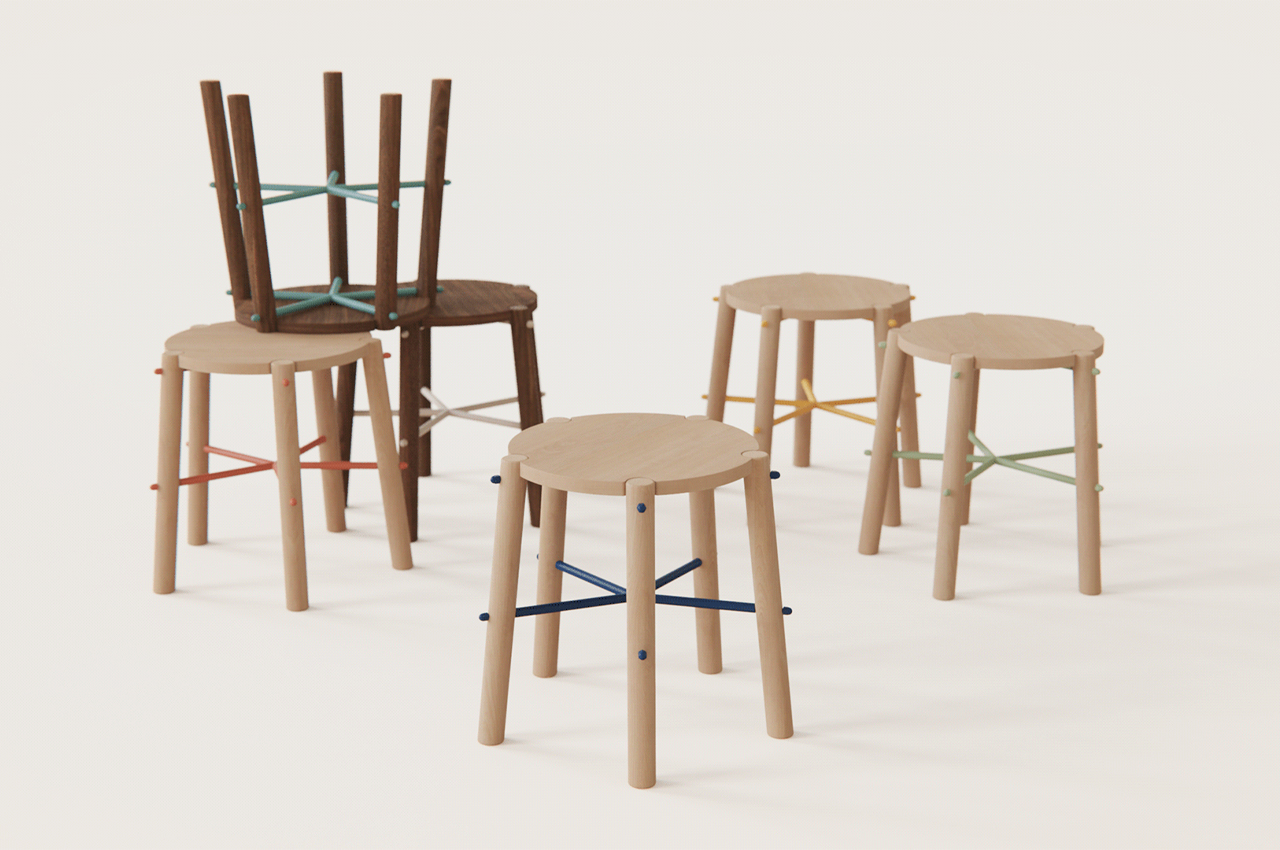
Small stools can come in handy anywhere. From empty art studios to crowded offices, stools can make the simple difference between sitting on the floor and having a seat. They especially come in handy when they’re designed for easy assembly and storage. Developed by Alondra Elizalde, That Stool is a flatpack DIY small stool designed with easy assembly to provide a practical means of having a stool anywhere, at any time.
Why is it noteworthy?
That Stool is comprised of only a few parts: a seat rest, five legs, a couple of star-shaped spindles, and some connecting nuts and bolts. All contained within a flatpack corrugated cardboard box, the parts of That Stool are easy to assemble with no additional hardware required. Following the imprinted instructions on the underside of That Stool’s top cover, users will first attach each leg to the corresponding screws on the star-shaped spindles. From there, connecting fasteners secure the legs and spindles in place, providing a sturdy bolster for the seat rest to mount.
What we like
- Assembled in only four steps without any additional hardware
- Can be used anywhere, at any time
- You can build it yourself!
What we dislike
- Looks like any other regular stool on the market
2. The Stair Cubby

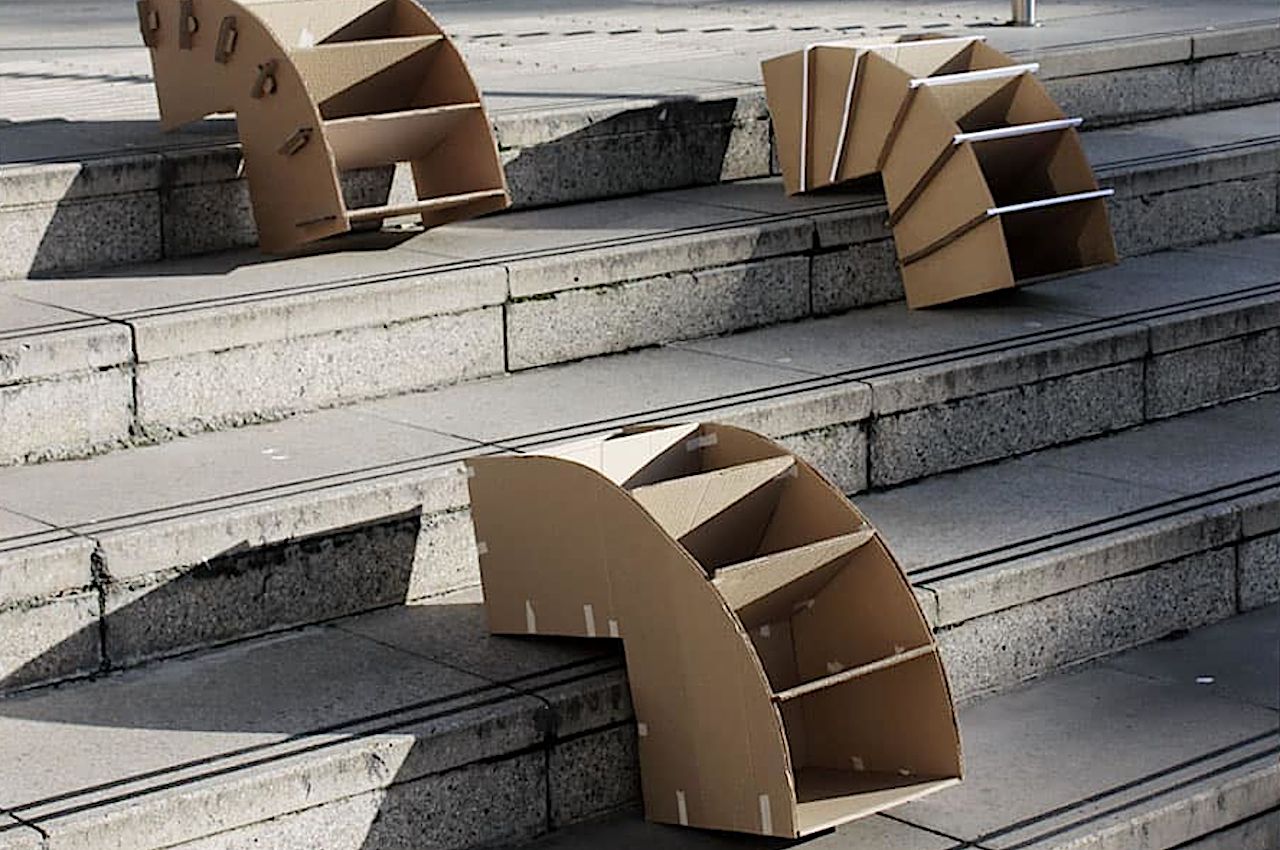
The Stair Cubby, as it was christened, can be assembled without the use of tools, with tabs simply going into slots and held down with pegs. The cubby is designed to sit on two steps of stairs, but the panel on the back can slide up and down to adjust to different stair heights. The storage has five open-access cubbies for shoes, books, and any other item that can fit inside, keeping things organized and out of harm’s way.
Why is it noteworthy?
Staircase bins need to take into account the particular shape of stairs, but not all stairs are made equal, so they have to be a bit more flexible or at least configurable. Given how in-demand these storage solutions might be, they also need to be durable and sustainable. These two product design students from Nottingham Trent University in the UK hit both birds with one sheet of plywood.
What we like
- Can be assembled without the use of tools
- Great for homes with space constraints
What we dislike
- We’re not sure how well it would hold heavier objects
3. Float


Float is a flatpack cat tower with built-in scratching pads that can be assembled in just a few steps. Keeping cats entertained is a losing game. With all of the toys we buy for our feline friends, they still seem to prefer the armchair for scratching and balls of yarn for chasing. But then, that rare piece of furniture comes along made specifically for them that becomes their favorite spot for a midafternoon cat nap.
Why is it noteworthy?
Amounting four levels, Float is a flatpack cat tower with integrated features like scratching posts and movable seat rests. Following a client’s specifications and criteria, Teixeira designed Float so that it would blend into any modern home. Taking on a Scandinavian-inspired overall look, Float achieves a minimalist profile through natural, unstained wooden rods as well as cool, gray felt cushions.
What we like
- Scandinavian-inspired aesthetics
- Designed to optimize functionality and versatility
- Height can be adjusted
What we dislike
No complaints!
4. Nook


Designed in two different sizes, Nook is a collection of desk and room dividers made from disused Just Booth cardboard shipping containers. Amidst busy offices, distractions can come at any moment. Conceptualized as a means for workers to get quiet concentration time, the collection of smaller dividers can be configured on desks to create a small working zone.
Why is it noteworthy?
It’s said that it takes a little over twenty minutes to get back to work after a distraction. Whether you’re working from home, in your local coffee shop or a busy office–distractions are everywhere. Designing a means for privacy, Just Booth is a Polish acoustic pod brand that develops sound booths where you can retreat for privacy during the workday. Following a competition held by Just Booth and the Academy of Fine Arts in Łódź where designers were asked to repurpose Just Booth cardboard boxes, Patrycja Gorzela designed Nook.
What we like
- Super lightweight and slim
- Sustainable design
What we dislike
- Could be easily damaged
- Not sure how suitable it is for long term use
5. The Storm Lamp

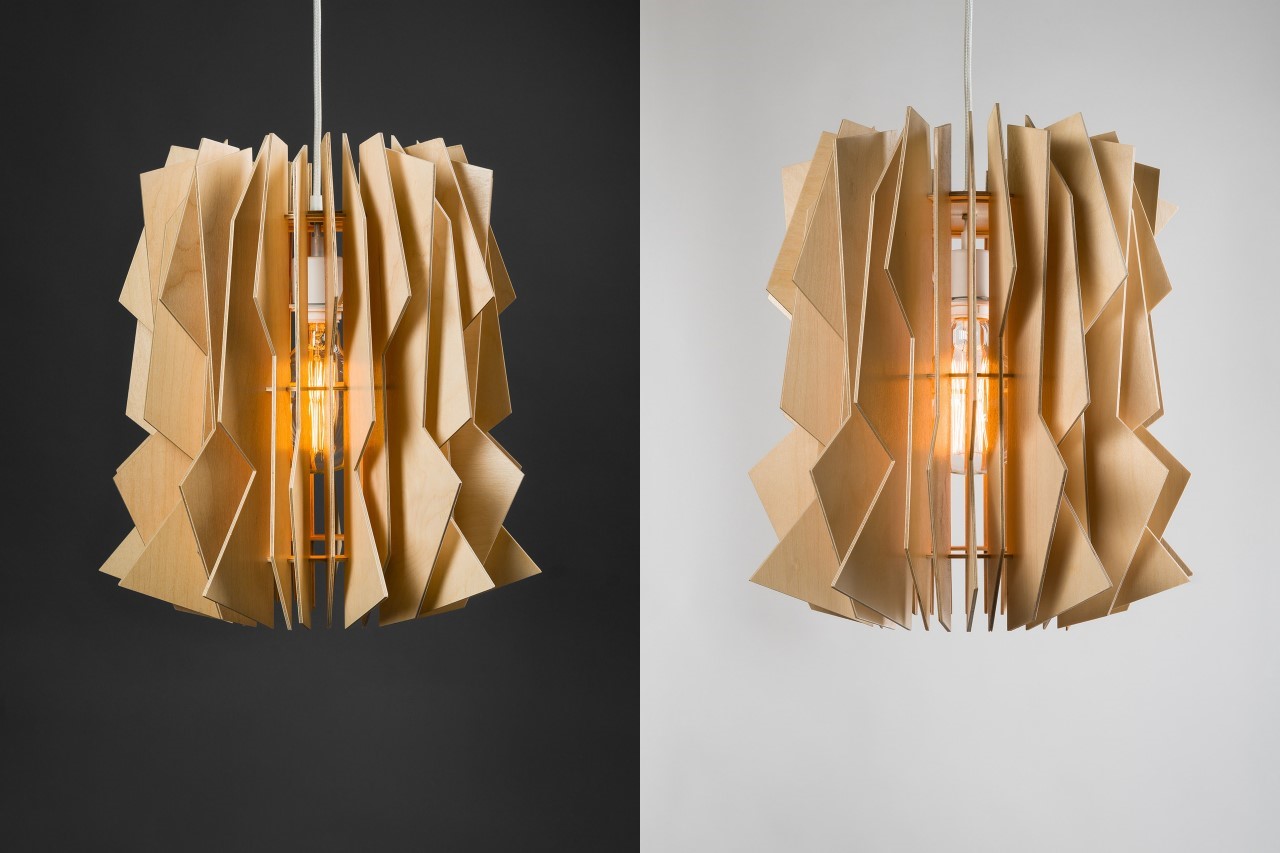
The beauty of the Storm Lamp by Julia Kononenko is that there isn’t any method to its mad design. The lamp comes with a variety of laser-cut wooden panels that can be arranged/oriented in any way you like because as its name suggests, the Storm Lamp is all about beauty in chaos. Looking almost like an abstract tornado, the lamp is entirely made from flat pieces of laser-cut plywood that are either left plain or painted black.
Why is it noteworthy?
When assembled together, they create a 3D form using the Gestalt visual law of continuity. Moreover, the jagged edges themselves illuminate to look like chaotic lightning strikes, reinforcing the product’s inspiration!
What we like
- The lamps are available in both hanging and floor formats
- The jagged edges themselves illuminate to look like chaotic lightning strikes
What we dislike
No complaints!
6. The O TRL
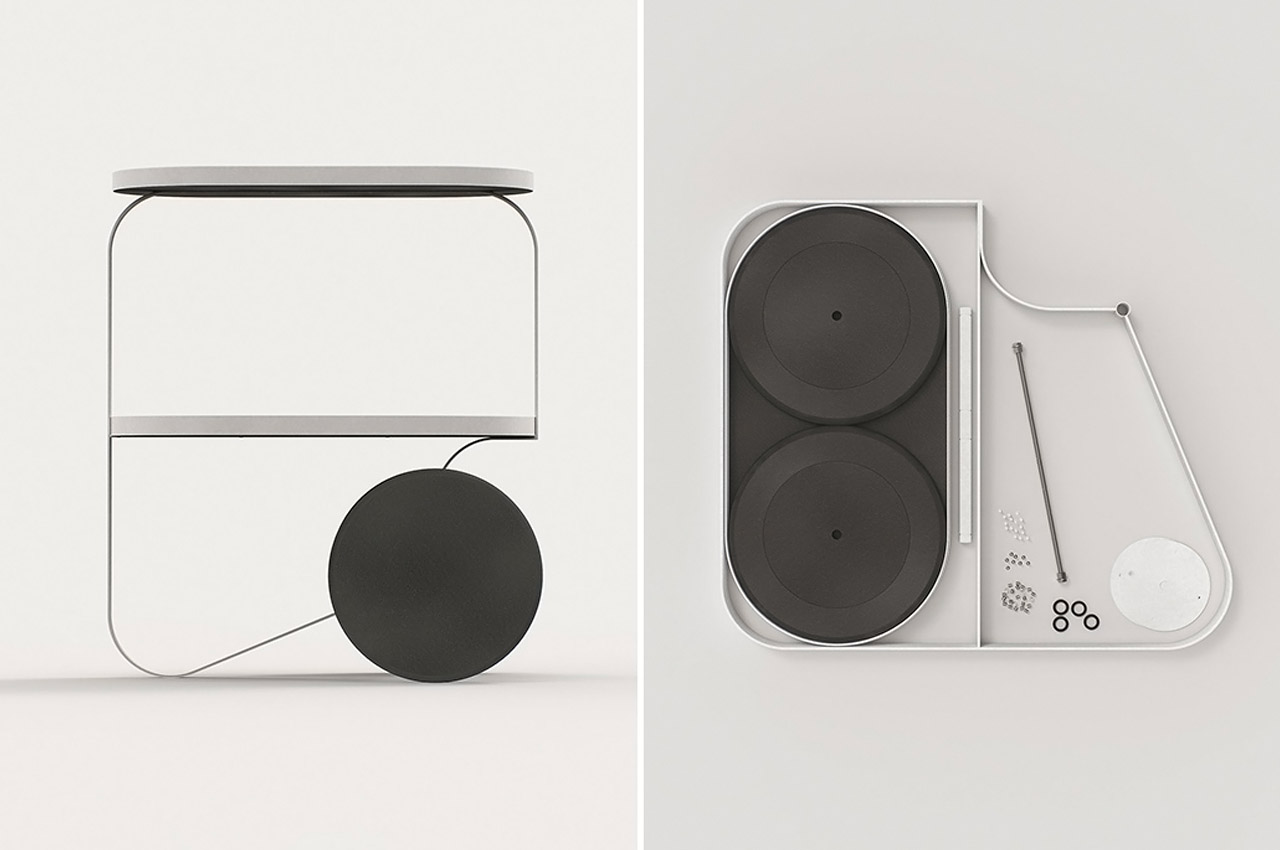

What the world needs more of is minimal and elegant furniture like the O TRL by Annabella Hevesi. Annabella created this tray table as a versatile piece of furniture – use it to store your stationery, kitchen knick-knacks, or as a makeshift desk in work from the home emergency scene – the pure and minimal aesthetics of this design make it a perfect match everywhere.
Why is it noteworthy?
The trolley has a slim and sleek silhouette and is constructed using a black MDF board, powder-coated steel, and rubber. Do not be fooled by its humble looks; this tray can bear its fair share of weight and move around smoothly, given its large weight-bearing wheels.
What we like
- Can bear weights
- Moves around smoothly
What we dislike
- The design looks a little frail
7. FLUP


Who isn’t fascinated by transforming furniture designs? I love watching how furniture can serve multiple purposes by simple actions like a pull of a string or folding of a flap. My latest love in the realm of (furniture) transformers is FLUP – a multifunctional furniture piece that is both a rug and a seat! Furniture designs like FLUP are perfect for smaller living spaces, especially with the growing tiny house movement.
Why is it noteworthy?
In the unfolded position, FLUP works like a conventional mat or rug on which we can sit or step without interrupting the movement of people through the space. It transforms from plane to volume, from floor to space while changing the function with its shape. In the folded position, it works as a piece of minimal furniture – it can be used as a pouf, an auxiliary seat, a footrest, a nightstand, etc.
What we like
- Transforming design
- Space-saving
- Ideal for tiny homes
What we dislike
- Doesn’t rate high on aesthetics
8. The Tie Stool
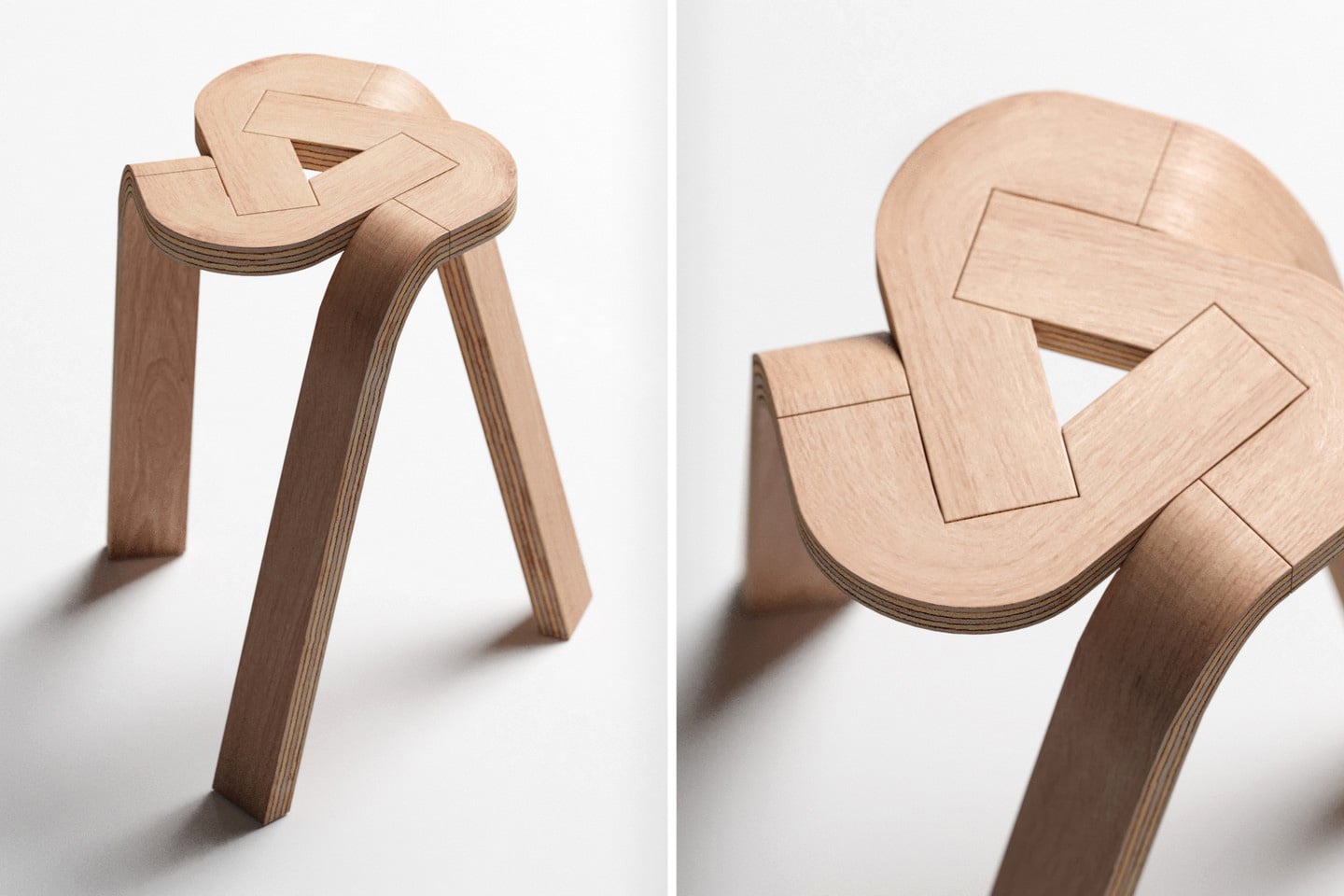
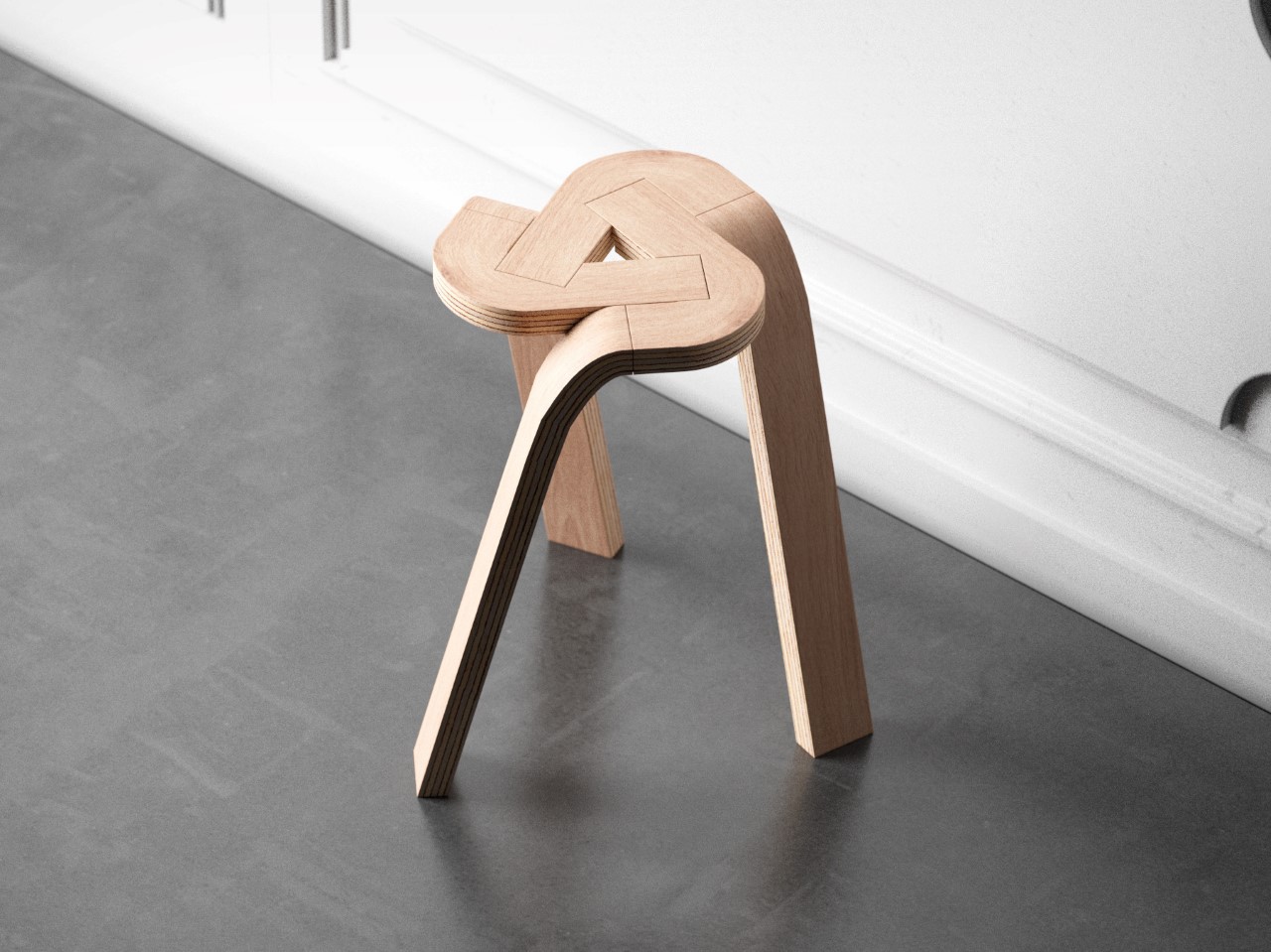
The Tie Stool’s beauty lies in its sheer simplicity – not just design but also materials. The stool comprises three bent plywood strips that conveniently lock into each other, creating a tripod form that you can easily sit on. The design could easily expand to accommodate more strips to create a 4-legged (or even 5-legged) stool, but the dynamic nature of having a tripod format really gives the Tie Stool its appeal. I don’t know about you, but I can’t unsee the Google Drive logo in the stool’s design!
Why is it noteworthy?
Fabricating the Tie Stool would require a few simple steps. The three plywood strips can, in fact, be split into 6 total parts (you can see the parting lines). The individual parts are formed using high pressure and temperatures that cause the plywood to bend and retain its shape, and cutting/finishing processes are performed on the parts to make them interlock into one another.
What we like
- The entire stool can potentially be flat-packed and shipped to customers
- It’s stackable
What we dislike
No complaints!
9. Listón
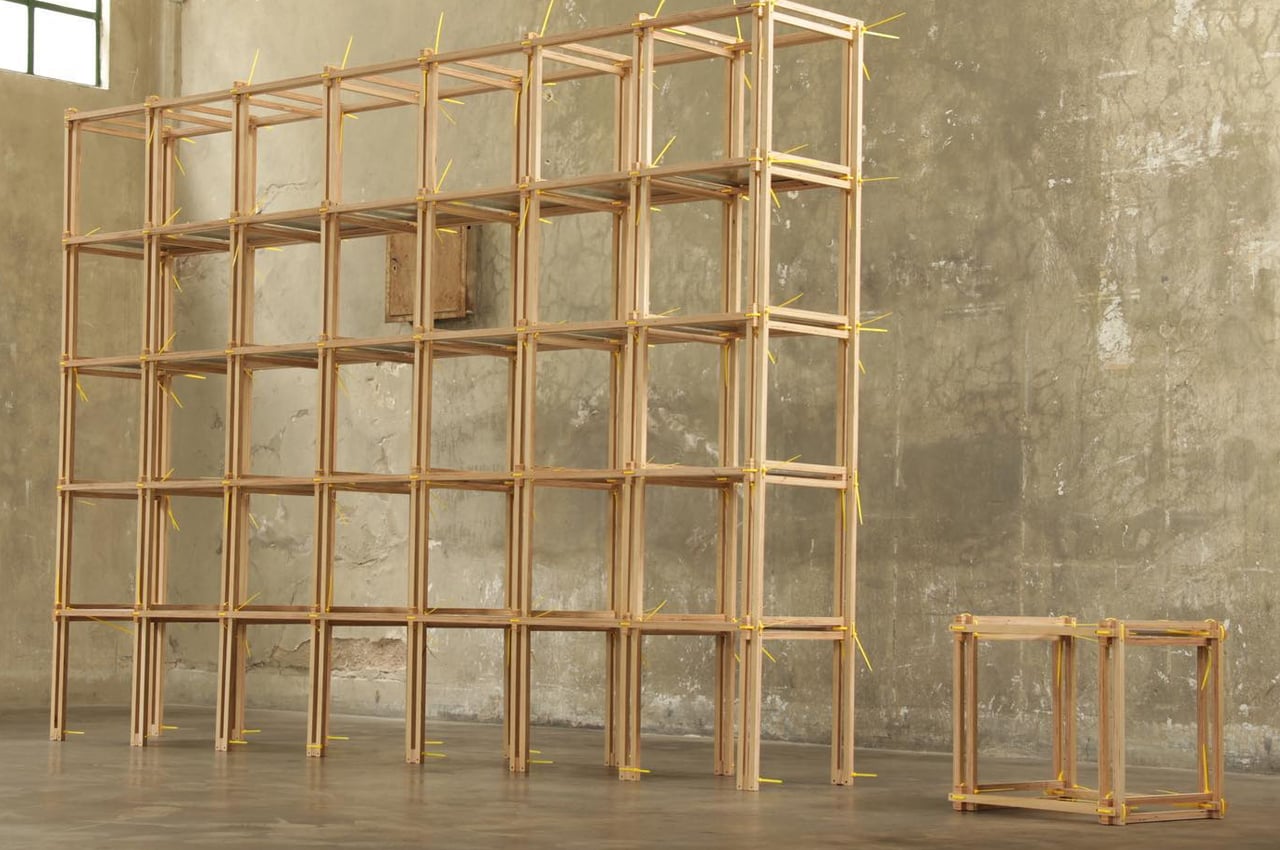

Listón is a modular shelving unit that uses a system of cable ties and wooden slats to form an endlessly re-configurable and sustainable furniture piece. The cable tie system allows users to create infinite configurations of varying sizes and shapes for essentialist shelving units that will look good in any room. Replacing hardware and tools, the cable ties systems provide secure fastening for each module that comes with Listón.
Why is it noteworthy?
Many designers are approaching new furniture and appliance designs with sustainability being the driving force. Adding his design to the mix, architect, and designer Guille Cameron Mac Lean developed Listón, a new type of furniture system that uses cable ties and wooden slats to configure modular storage units.
What we like
- The system of cable ties and wooden slats significantly reduces the amount of packing goods needed to ship the furniture system by 18 times in comparison to other flatpack furniture
What we dislike
- The wooden slats and cable ties could break
- Not the most aesthetic furniture design to add to your living space
10. The Atlas

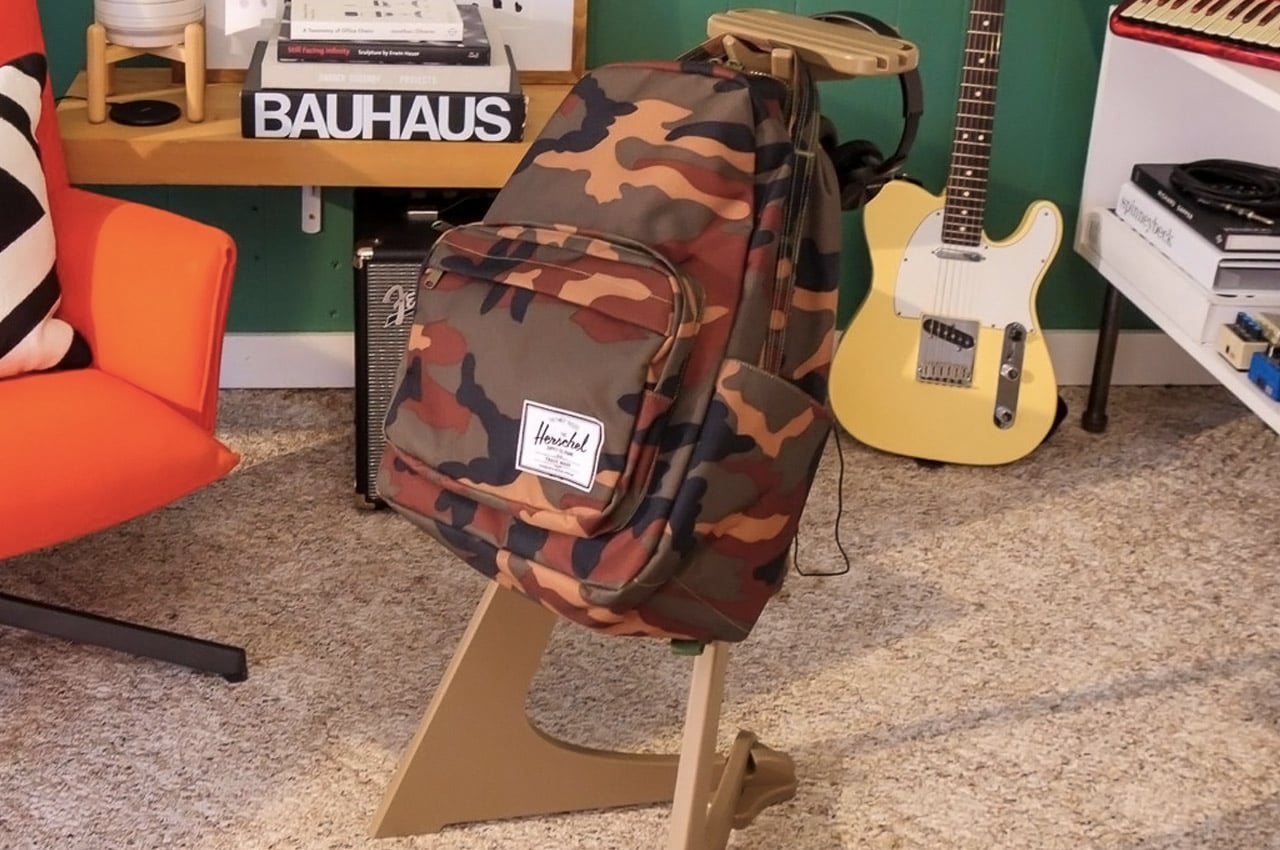
Your backpack is as much a part of your apparel as your coat is or your cap or sunglasses for that matter. As a society, we’ve come to accept keeping bags on the floor, and having their bottom surface collect dust and dirt over the years. You wouldn’t do it with any other part of your outfit, so why is it okay to keep your bag on the floor? That’s a question the guys at Addio Design Collective found themselves asking too. With that very design brief, they created the Atlas Backpack Stand – a new category of furniture that serves the purpose of a side-table as well as a stand for hanging your backpacks, so they don’t have to touch the floor.
Why is it noteworthy?
The Atlas isn’t a conventional side-table. It comes almost with the proportions and shape of an easel, sporting an A-shaped frame. It comes with a slightly inclined design too, keeping the stand stable and preventing it from tipping over due to your bag’s weight. On top, two tiny hooks let you hang your backpack, bag, duffle, suitcase, purse, or tote, while a flat surface acts as a storage area for your phone, AirPods, sunglasses, etc. It’s a stand designed around your backpack and your EDC and can sit perfectly near your work table.
What we like
- It suspends your bag above the ground, keeping it from getting dirty
- Makes it easy to access stuff inside your bag without having to bend down
What we dislike
- A bit of a niche product – may not appeal to everyone
The post Flatpack furniture designed to perfectly complement the tiny home movement first appeared on Yanko Design.
from Yanko Design

0 Comments